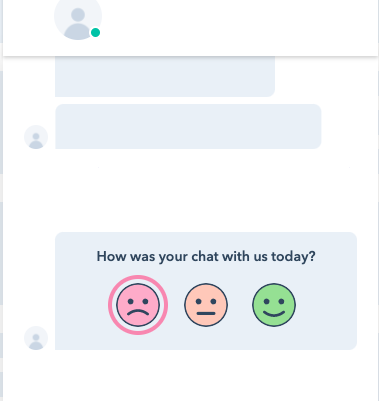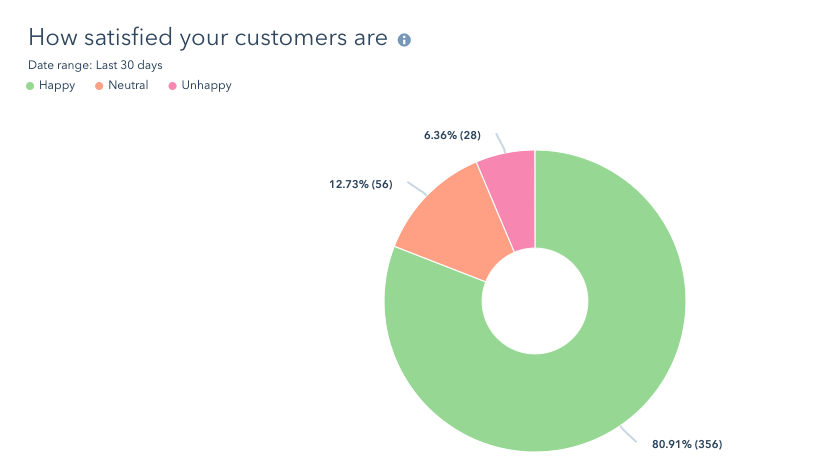Why add a post-feedback customer survey to live chat?
Asking for feedback is at the core of HubSpot's customer code.
That's why my team recently enabled a post-chat feedback survey to our website — so we could collect customer satisfaction in real-time.
The goal of any conversational marketing program should be to create a remarkable customer experience with chatflows. Plus the customer code tells us 90% of visitors will buy more if they have an excellent experience.
By analyzing post-chat feedback, our customers help us build the chat experience they desire and need.
CSAT (customer satisfaction score) measures customer satisfaction with a business, purchase, or interaction … and, in this case, with chat. There are three response options: happy, neutral, and sad.

How the smile-y faces are defined:
- Promoter: The happy face represents the promoter meaning the chatter is happy with the interaction and will promote it.
- Passive: The neutral face represents the passive score meaning the chatter liked their interaction but did not love it and that there is still room for improvement.
- Detractor: The sad face represents the chatters who are unhappy with the interaction and tells us that there is real work to be done.
Initial Results of Adding the Survey
HubSpot's Conversational Marketing team aims for 75% promoters. Since we first implemented the post-chat survey, we've increased our CSAT score by 7%.
We did this by sorting and then acting on the passive and detractor scores — for instance, we were able to coach support reps after reading through their transcripts to see where they performed well, as well as areas for improvement.
Additionally, the post-chat survey enabled us to identify bugs and logic areas (by analyzing common complaints such as "this chat isn't loading correctly).
Finally, could track chatters' consistent expectations or requests. If we saw one request asked often, we were able to send the feedback to the product team for future product iterations.
Ultimately, fixing these errors and responding to customer feedback has greatly increased our sales metrics. In fact, projects associated with CSAT changes have increased an average Qualified Lead rate by 33% (specifically in the chatflows tested).

How to Implement CSAT for Your Own Business
CSAT is a measure of chatter satisfaction. HubSpot enables companies to set up post-chat feedback surveys, meaning you can ask for feedback the moment the chat ends. This will enable your service and sales teams to leverage better data and improve the customer experience.
With post-chat survey, your team can collect immediate feedback. We're also able to pinpoint how a customer is feeling at that specific touchpoint.
Why CSAT Matters
CSAT has been hugely important for the HubSpot team to expose the unseen/unknown of chat — The good and the bad. It's helped us identify top performers, coaching opportunities, fix mistakes to chat branching, and identify larger strategy improvements.
CSAT is helping us solve for the customer first.






